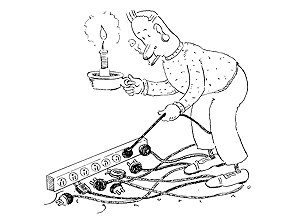mivey
Senior Member
PowerQualityDoctor does make some valid points. I have also made some of the same arguments in some of the other threads.
Without a POCO pf penalty, I have found that for the correction to be economically feasible, the power factor has to low, the load has to be large, located a good distance from the meter, and run a lot of hours. That is just for a simple capacitor solution.
I'm not sure what PowerQualityDoctor's costs figures are or how efficient the devices are, but if they can do the job for less than a capacitor install, the economics would naturally be better. In some cases, even devices with a higher cost than capacitors would still show positive economics.
In all fairness, I think PowerQualityDoctor was clear in saying that this would not be economical for most residential customers.
Without a POCO pf penalty, I do not buy into solutions at the meter, but solutions at the load or farther out in the distribution system can make economic sense even then.
Add: Of course, a POCO pf penalty makes the economics even better and feasible for additional loads.
Without a POCO pf penalty, I have found that for the correction to be economically feasible, the power factor has to low, the load has to be large, located a good distance from the meter, and run a lot of hours. That is just for a simple capacitor solution.
I'm not sure what PowerQualityDoctor's costs figures are or how efficient the devices are, but if they can do the job for less than a capacitor install, the economics would naturally be better. In some cases, even devices with a higher cost than capacitors would still show positive economics.
In all fairness, I think PowerQualityDoctor was clear in saying that this would not be economical for most residential customers.
Without a POCO pf penalty, I do not buy into solutions at the meter, but solutions at the load or farther out in the distribution system can make economic sense even then.
And I have posted info before showing these losses can be significant enough to make the correction worthwhile.Yes you do pay for the losses between the meter and the load.
Add: Of course, a POCO pf penalty makes the economics even better and feasible for additional loads.
Last edited:


